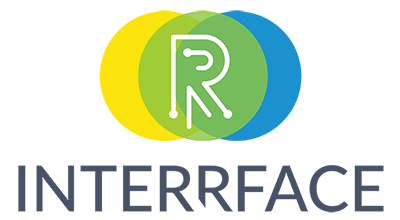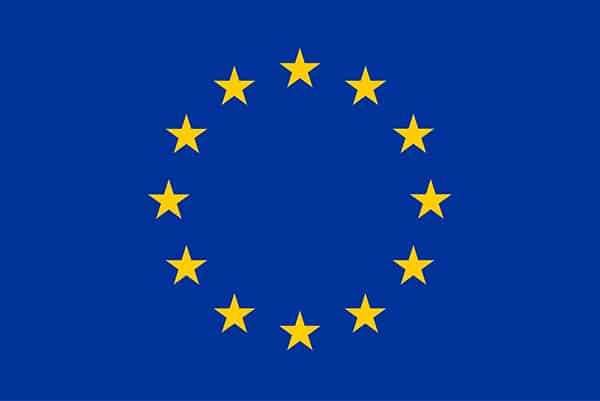Foundations for the adoption of new EU electricity network codes and other market rules
This is the first instalment of the Topic of the Month: Building new knowledge on electricity market design and regulation
Electricity markets are not built in one shot. In Europe, they are more than 20 years old but they keep evolving. Research on how to design markets to deliver efficient and secure electricity supply to European citizens and firms is ongoing. FSR contributes to this scientific effort by participating in several projects.
In this Topic of the Month we give insight into the four European Horizon projects that the FSR Electricity Team is currently contributing to.
The four projects on electricity markets fall into two subject areas:
- INTERRFACE and OneNet cover the area of TSO-DSO-consumer coordination
- int:net and EDDIE cover the areas of interoperability and energy data-sharing
The projects are at different stages in their lifecycles. INTERRFACE was completed in December 2022. OneNet is in its third year and will run until March 2024. Int:net is reaching the end of its first year and will run until April 2025. EDDIE has only just started in January 2023, and will run until December 2025.
Each week, we cover one project. We introduce you to the general project vision and the specific research FSR is conducting. Where already available, we provide you with an overview of our research results.
Context
Growing shares of renewables in the electricity mix, the increased interconnection of European grids, and the development of local energy initiatives require greater coordination among system operators. EU legislation promotes cooperation among system operators in the procurement of balancing, congestion management and other ancillary services, both at the transmission and distribution level. DSOs and TSOs must define the services they need in collaboration with market participants and set up mechanisms to procure them in a coordinated manner. An adaptation of the electricity market design may be necessary to reflect the new needs and requirements. In this context, digitalisation facilitates the coordination and active management of the grid by system operators and empowers end users to become active market participants.
INTERRFACE Project
The H2020 project INTERRFACE (TSO-DSO-Consumer INTERFACE aRchitecture to provide innovative grid services for an efficient power system) designed, developed and exploited the Interoperable pan-European Grid Services Architecture (IEGSA) to act as the interface between the TSOs and DSOs, and the customers, and to allow the seamless and coordinated operation of all stakeholders to use and procure common services. To enhance consumer participation in electricity markets and exploit distributed energy resources, new (technological) opportunities were sought, and new market structures were proposed.
Focus of the FSR research in the INTERRFACE project
At the Florence School of Regulation, we have been researching and teaching on the EU network codes and guidelines for many years. Initially, we mainly focused on the implementation of the first generation of network codes resulting from the Third Energy Package. INTERRFACE allowed us to look ahead towards the second generation of network codes, emerging from the Clean Energy Package.
The network code priority list for the years 2020-2023 of the European Commission guided our research priorities. Among several candidates, two topics were developed into full-fledged research streams:
- Demand-side flexibility in line with Art. 59 of Regulation (EU) 2019/943, and
- Interoperability and data access in line with Art. 24 of Directive (EU) 2019/944.
Our INTERRFACE research and stakeholder engagement activities focused on identifying the need for new European rules relevant to these topics and providing recommendations for their adoption.
Demand-side flexibility
Research set-up
Demand-side flexibility benefits are multifaceted and address different use cases. The use cases typically serve different flexibility needs, from long-term to short-term timeframes. Flexibility provision can be organised through bilateral agreements or market-based. Some use cases are more relevant for DSOs (e.g. investment deferral), and others are more relevant for TSOs (e.g. system balancing). Congestion management and voltage control could be relevant for both TSOs and DSOs.
In our research, we focused on the long-term use case of network investment deferral. We published three papers [1, 2, 3], in which we discuss the costs and benefits of using flexibility to save investments in distribution grids, based on two bi-level optimisation models we developed. In each paper, we made additional steps in the modelling and in the discussion of the main sensitivities, which include regulatory choices (e.g. mandatory vs. voluntary flexibility, and the level of compensation for the use of flexibility) as well as context-specific parameters (e.g. the value of lost load and the cost of distribution grid expansion). We focus here on the regulatory choices.
Key results
The results of our research cover three main areas: the cost-reflectivity of distribution tariffs, compensation levels for mandatory and voluntary demand-side flexibility, and mandatory versus voluntary demand-side flexibility.
Cost-reflectivity of distribution tariffs. In the context of using demand-side flexibility by residential prosumers, we found that flexibility contracting can help to correct the imperfect signals provided by distribution tariffs and/or to address the peaks of passive consumers that do not respond to tariff signals. Our research shows that explicit demand-side flexibility schemes (in our case explicit flexibility means mandatory curtailment by the DSO with compensation) in combination with cost-reflective capacity-based network tariffs lead to higher welfare gains than when combined with partly cost-reflective network tariffs. Well-designed cost-reflective network tariffs incentivise prosumers to invest in PV and battery systems in order to pay lower bills, including network charges. In turn, explicit demand-side flexibility complements the role of network tariffs for prosumers by curtailing the passive consumers that do not have the DERs to respond to the tariffs. However, the combination of these regulatory tools also has its limits. If tariffs are too imperfect, it can become too costly to fix the corresponding behaviour with flexibility contracts.
Compensation levels for mandatory and voluntary demand-side flexibility. In the second part of our work, we focused on a specific type of explicit demand-side flexibility scheme, modelled as demand-side connection agreements. These are constrained or non-firm connections between the system operator and a customer, typically a distributed generation owner or a consumer.
We first investigated the level of compensation for mandatory demand-side flexibility and found that exogenously setting the correct compensation level is not straightforward. For low compensation levels, passive consumers will be only partly compensated for the electricity load curtailment. However, when the compensation is set at high levels, e.g., at the Value of Lost Load (VoLL), it becomes too attractive for prosumers to use their batteries against the system needs, to be curtailed more and earn the high compensation. This makes it difficult for the regulator or the DSO to set the correct level of compensation in the presence of active and passive consumers.
We also investigated voluntary demand-side connection agreement schemes with a focus on the compensation design. We compare uniform and differentiated pricing. Our results show that applying price differentiation leads to higher welfare gains than applying uniform pricing, but can be tricky among residential consumers. In particular, it may be difficult for DSOs to distinguish between passive and active residential consumers and DSOs may decide on a single price for the sake of simplicity of the participation of small providers in flexibility schemes. We thus investigated the possibility to differentiate between different consumer categories, i.e. commercial and residential consumers, and found that it is opportune and more feasible to do so.
Voluntary versus mandatory demand-side flexibility. In the third part of our research, we compared two main schemes for contracting demand-side flexibility by the DSO at the planning stage in terms of the resulting welfare gains: a voluntary demand-side connection agreement where consumers offer their flexibility, i.e., load reduction, to the DSO and a mandatory demand-side connection agreement where the DSO sets the flexibility levels, i.e., load curtailment, to be contracted from residential consumers. Load reductions in both schemes are considered to be non-recoverable, i.e., there is no rebound effect. The results suggest that regulators and DSOs should consider introducing a mandatory scheme for their customers. However, mandatory demand-connection agreements entail different levels of flexibility contracting on consumers, creating equity and feasibility issues. They may, therefore, face low public acceptability.
Interoperability and data access
Research set-up
The recast of the Electricity Directive (EU) 2019/944 in the Clean Energy Package entitles the European Commission to adopt implementing acts, specifying interoperability requirements and non-discriminatory and transparent procedures for access to metering and consumption data, as well as data required for customer switching, demand response and other services. The first implementing act is currently being developed. The Fit for 55 Package expanded the scope of the interoperability debate to cross-sectoral aspects in light of a future energy system integrated with buildings and mobility.
In our research, we were inspired to analyse interoperability frameworks and existing experiences with interoperability [4]. We have also compared the interoperability experience with smart electricity metering at EU level to experiences in other ecosystems (electro-mobility and buildings), other sectors (healthcare and public administration) and at the national level (the Netherlands and the UK) [5]. The idea was not to copy-paste what has been done in other contexts but to learn from successful initiatives and adapt their methods to our context.
Key results
The results of our research cover three main areas: interoperability definitions and frameworks, tools and solutions to strengthen interoperability, and governance.
Interoperability definitions and frameworks. The analysis of existing interoperability frameworks showed that interoperability is a multi-dimensional issue. Achieving full interoperability requires addressing all dimensions, including regulation and policy, business processes, information models, data format and communication protocols, use of standards, and interoperability testing.
Our research also showed that there is no single definition of interoperability. Definitions can focus on the level of devices and systems, or can be broader to address the level of organisations. The elements included in a definition often give an indication as to the open interoperability issues in a specific sector or ecosystem.
We recommended that the upcoming EU interoperability acts should be ambitious in addressing the multiple dimensions of interoperability. This ambition should also be reflected in the definition that is used.
Tools and solutions to strengthen interoperability. On our way to full interoperability of energy services, we can draw inspiration from existing experiences. The experiences of the North American Green Button initiative with utility customer data and of ENTSO-E with data exchange requirements from the electricity network codes show that different use cases can inspire different solutions [4].
Our cross-sectoral research showed that despite differences in the specific interoperability issues a certain sector faces, the solutions applied at the EU level are often similar across various sectors. Experiences in the healthcare and public administration sectors can serve as an inspiration for energy, especially regarding interoperability testing and governance.
We recommended to set up an EU monitoring and reporting scheme for (national) interoperability progress. We also recommended to create a scheme for different types of interoperability testing. The Horizon Europe int:net project is currently exploring ways to facilitate the collaboration of relevant initiatives to develop and implement these and other interoperability solutions.
Governance. Governance is a key issue in achieving interoperability. In our research, we provided ideas on how to step up the existing efforts in terms of stakeholder dialogue and European standardisation.
For example, an “interoperability stakeholder committee” could be created to ensure that relevant stakeholders are consulted and involved in the implementation phase of the interoperability implementing acts. The committee could even set up working groups that would be tasked with developing and/or documenting data exchange rules for a certain use case family.
Another idea could be to better exploit synergies between sectors, inspired by national experiences. One measure could be to set up a governance framework for interoperability that covers sector-specific and cross-sectoral aspects. Another measure could be to enhance sector convergence in standardisation, for example in the areas of demand response, EV charging and smart appliances.
In addition, we think interoperability governance should be extended to include the formalisation of best practices, monitoring of national implementation, of monitoring and reporting activities, and interoperability testing. Reaching and maintaining interoperability requires a continual improvement process due to an ever-changing policy, regulatory, business and technological environment. Standardised processes and methods need to be established and maintained, stakeholder participation facilitated and non-discriminatory access to documentation, tools and methods provided to all relevant stakeholders. We reflected that these responsibilities could be taken on by a new EU entity or as joint tasks of existing EU entities.
Recent developments
Some of the elements that we have discussed in our research have recently been taken up in one way or another at the EU level. The draft EU implementing acts published in July 2022 consider the various interoperability layers that exist and require the establishment of a common repository of national practices. The EU Digitalisation of Energy Action Plan strengthens stakeholder dialogue in the energy sector by re-establishing the Smart Grids Task Force and setting up the new Data for Energy Working Group.
You’ve just read the first instalment of: Building new knowledge on electricity markets design and regulation, Topic of the Month by Sofia Nicolai, Valerie Reif, Nicolò Rossetto, Daniele Stampatori.
Read more
INTERRFACE D9.14 : report on the foundations for the adoption of new Network Codes 2
This deliverable combines findings and results from INTERRFACE research on demand-side flexibility and interoperability and data access and the INTERRFACE demonstration pilots to identify the need for new European rules and make proposals for their adoption.


This project has received funding from the European Union’s Horizon 2020 research and innovation programme under grant agreement No 824330
[1] Nouicer, A., Meeus, L., and Delarue, E., (2020). The economics of explicit demand-side flexibility in distribution grids: the case of mandatory curtailment for a fixed level of compensation, EUI RSCAS Working Paper 2020/45, also published in The Energy Journal, 44 (2023), DOI: 10.5547/01956574.44.1.anou.
[2] Nouicer, A., Meeus, L., and Delarue, E., (2022). A bilevel model for voluntary demand-side flexibility in distribution grids, EUI RSC Working Paper 2022/06.
[3] Nouicer, A., Meeus, L., and Delarue, E., (2022). Demand-side flexibility in distribution grids: voluntary versus mandatory contracting, EUI RSC Working Paper 2022/55, also published in the Energy Policy Journal, 173 (2023), 113342, https://doi.org/10.1016/j.enpol.2022.113342.
[4] Reif, V. and Meeus, L. (2020). Getting our act together on the EU interoperability acts, FSR Policy Briefs 2020/30.
[5] Reif., V. and Meeus, L. (2021). Smart metering interoperability issues and solutions: taking inspiration from other ecosystems and sectors. EUI RSC Working Paper 2021/69; also published in Utilities Policy, 76 (2022), 101360, ISSN 0957-1787, DOI: 10.1016/j.jup.2022.101360.






